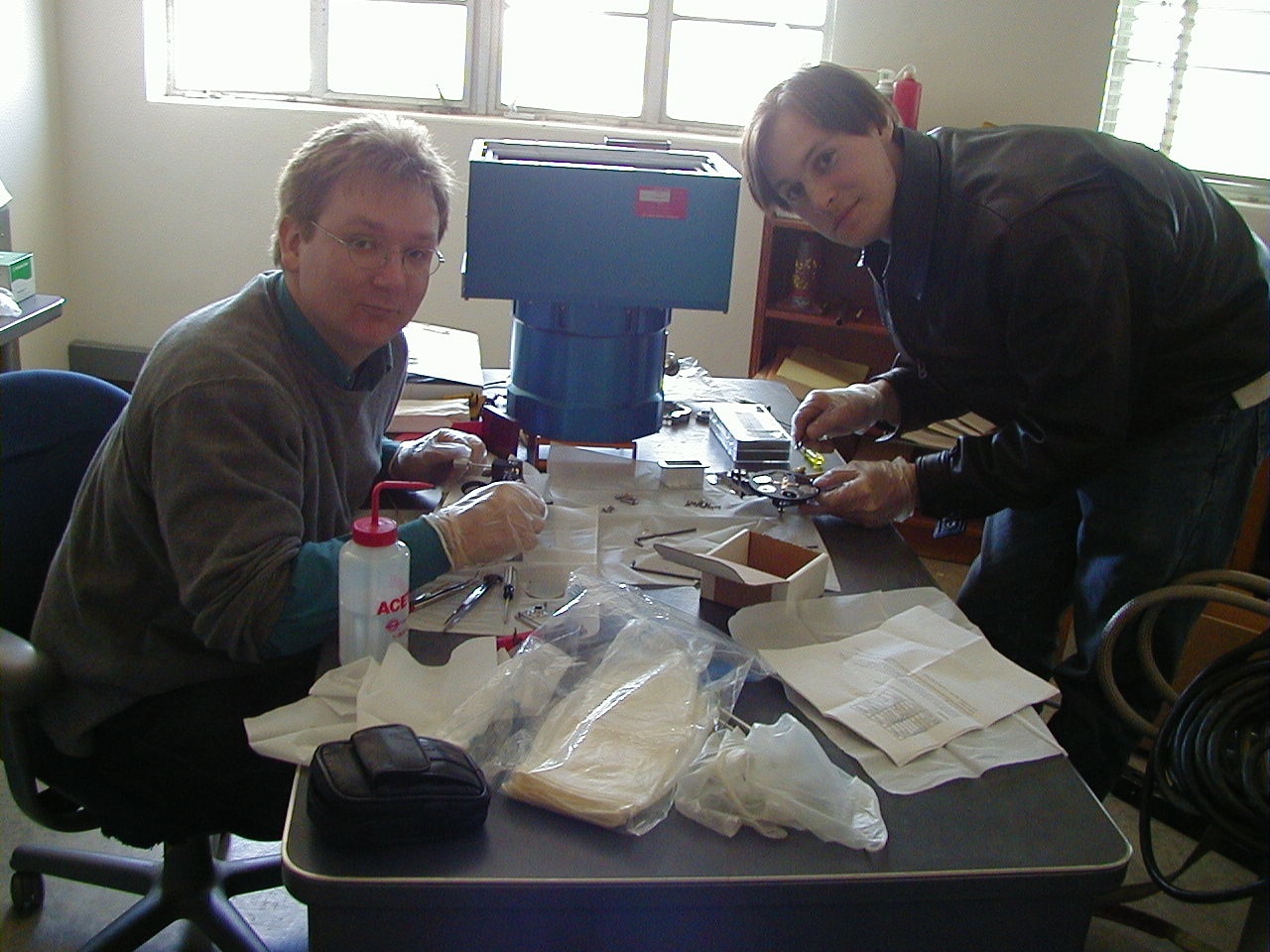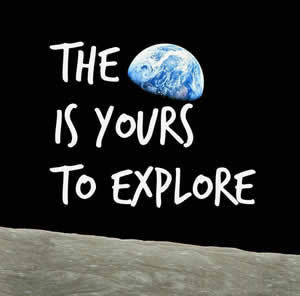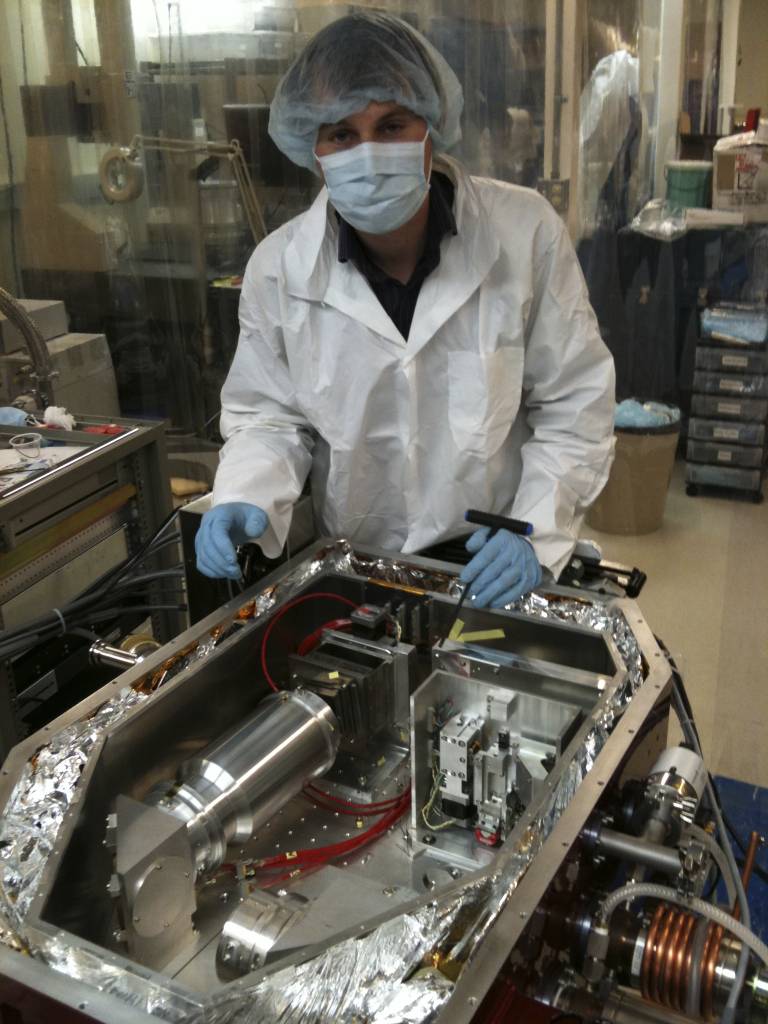GPI First light: That someday… is Monday night.

Major milestone for GPI. The exoplanet camera hunter is mounted on the Gemini South Telescope
October 25, 2013
Gemini Planet Imager Begins On-sky Integration at Gemini South
November 15, 2013For the last, oh, ten years or so I’ve been working on building a camera to take pictures of planets around distant stars, been lucky enough to be part of a team of the best damn astronomers I’m privileged to know and call my colleagues and my friends. It doesn’t overstate the matter to say this one project has probably been the single largest element of my entire career as a scientist. As we prepare to point that instrument to the sky for the first time this coming week, it’s kind of mind blowing to look back on that past decade of efforts, hopes, and dreams. How on earth did I get here?

Jamie Lloyd (left) and Marshall Perrin (right) working on NIRCAL camera, an instrument for the Lick AO system (year 2003).
In those ten years, I’ve changed from a young grad student looking on from the back rows as my advisor and his collaborator advocated for and created the early efforts that grew into this project, into a postdoc responsible for parts of one subsystem, to become a faculty member at one of the nation’s top astronomy centers leading a major portion of the team and with graduate students and postdocs of my own. This transformation continues to surprise and baffle me on a daily basis. We’ve invented new technologies, wrestled with technical hurdles left and right, and seen the first extrasolar planets imaged (by members of our team!). We’ve seen entire space missions be launched, carry out their observations, and end. We’ve seen a rover drive across the surface of Mars for a decade, and New Horizons travel most of the way toward Pluto. Facebook and iPhones and pervasive WiFi have changed the world. Gene sequencing got cheap. Wars have been fought and elections won. And all the while, we worked on building the best camera ever for imaging distant worlds.
In those ten years, for that project, I finished my Ph.D. studies and tried to figure out what it was to be an independent professional scientist. I left Berkeley and moved to Los Angeles, and spent three wonderful years there growing as an astronomer and learning from new mentors more about how to run a lab and a team, skills that I’m now putting to use daily running our own new lab that I built with my best and closest collaborator — someone who I met over a decade ago, doing related work that led into this same project. I was hired to join the faculty at STScI and work on mankind’s most ambitious space telescope ever, in large part because of the technical skills I’ve developed working on this project. I’ve tried to wrap my head around the aerospace industrial behemoth that is JWST. I’ve written countless simulations, given dozens of talks on what we’ll be able to do “someday”, helped grow a team of collaborators to write a whole mess of complex software with great people who every day I consider myself so lucky to lead. And all the while, we worked on building the best camera ever for imaging distant worlds.
In those ten years I’ve lived in four cities, and traveled across four continents. I’ve loved and lost and cried tears of joy and sorrow and found family and made friends, lost some and made new ones and then reconnected with old ones. I got sick and nearly died; then I got better (and biotechnology now keeps me that way). Amazingly, two of my closest and best friends, a couple of wonderful women, asked me if I would help them start their family, so now I’m the biological father of a son being raised by two moms. Joyously, the 21st century contains postmodern co-parenting as well as high technology, and we’re making up our own rules as we go along. And all the while, I worked on building the best camera ever for imaging distant worlds. Last week, our now three-year-old asked me about that instrument “Daddy, how does it work?”. That was pretty awesome.
Through all that time, nearly a third of my life and certainly the vast majority of my adult professional life as a scientist, I’ve thought and planned and dreamed about what we’d be able to do with this instrument, someday when it was ready and we could point it skyward and see what we could find. That “someday” kept us motivated through all the setbacks and problems, all the long nights in the lab or writing software, all the years of delay. That someday… is Monday night.
co-Lead Data analysis of the GPI consortium


1 Comment
Nice post Marshall and all the best for Monday and more!